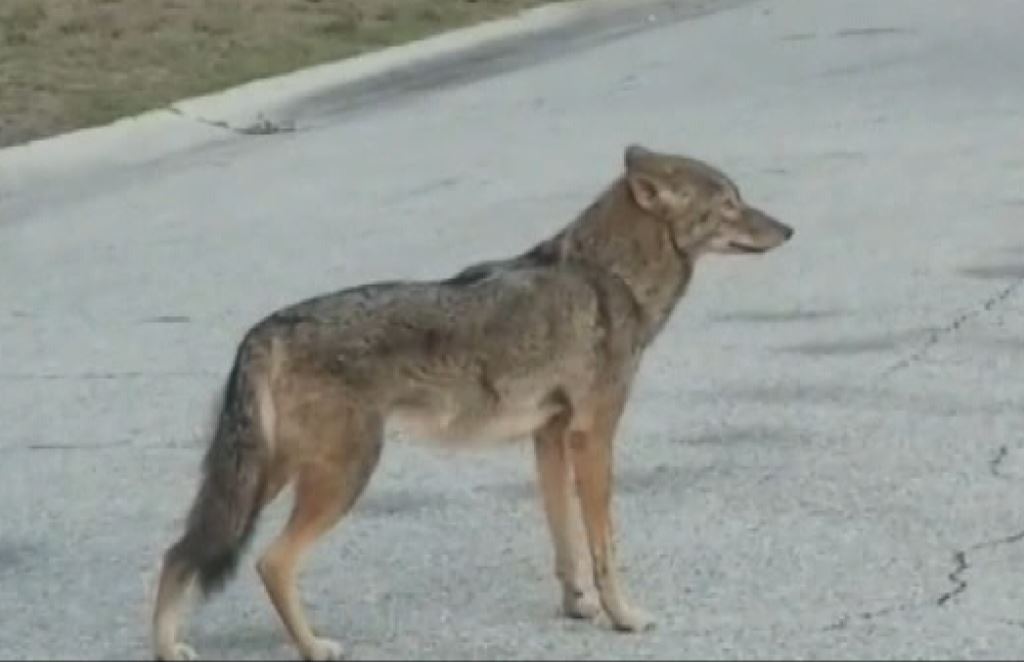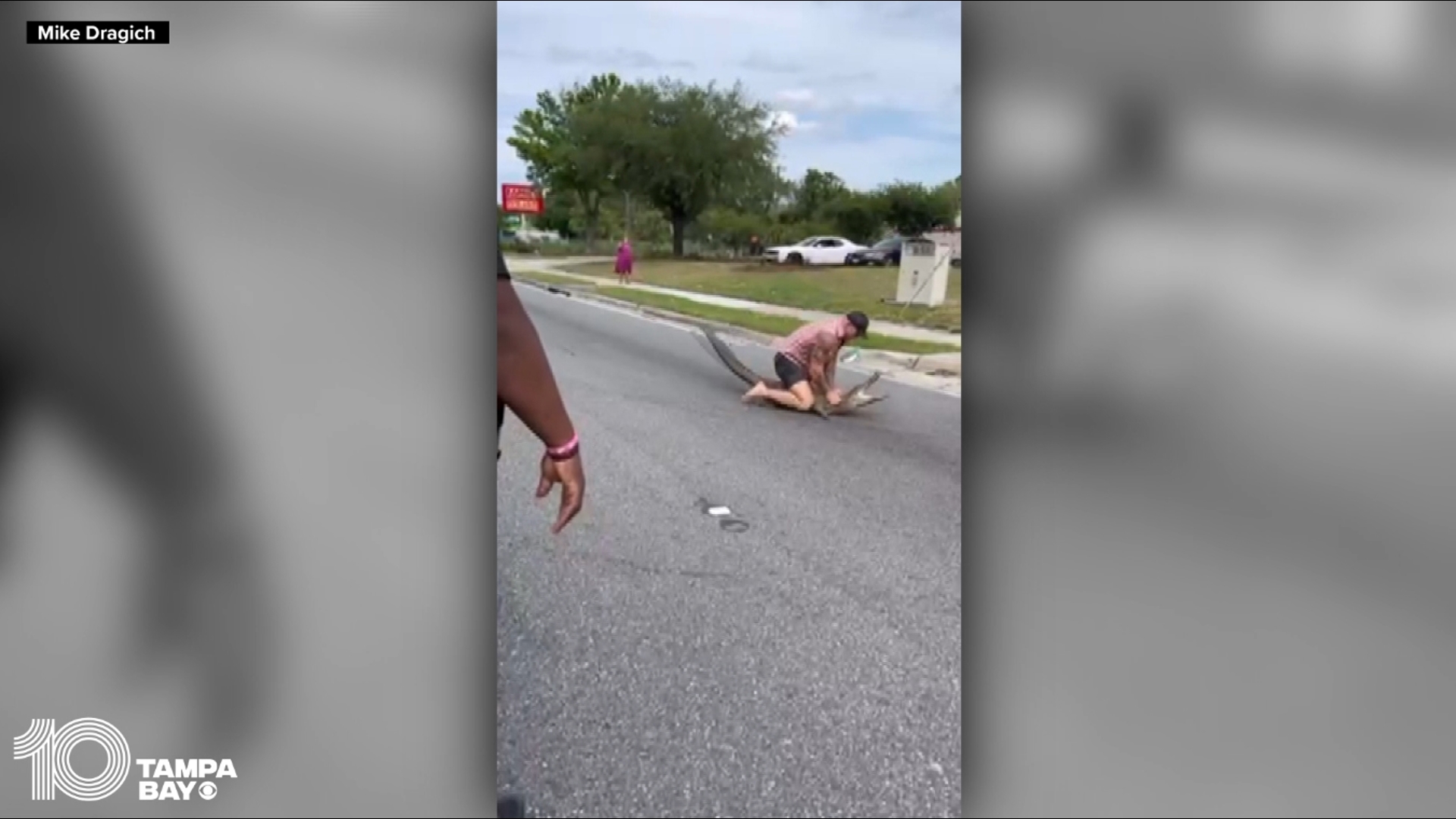When you visit the beach, you expect to see waves crashing upon the shore.
But apparently, something else may be crashing on Holmes Beach.
That’s according to a Facebook post from the city's police department, saying a coyote was allegedly spotted near 76th Street and Gulf Boulevard.
That’s right outside Larry Stullenberg’s front door, who’s visiting from Ohio.
“Someone saw one around here, that’s pretty neat,” says Stullenberg.
Neat, but also shocking to some to think that these canines are creeping all the way west.
“We’ve seen them in towns before,” says Stullenberg.
And especially around towns here in the Bay Area — we’ve gotten reports up and down the coast from Venice, St. Pete to New Port Richey.
Coyotes are being spotted in backyards, the middle of the street, and the railroad tracks.
“They are pretty shy,” says Stullenberg.
But they don’t shy away if they see something they like.
Here are tips from the FWC:
How can I get a coyote to leave?
Coyotes are not large animals and rarely pose a threat to people, especially adults. They can be curious but are also timid and generally run away if challenged.
If a coyote approaches too closely, there are methods you can use to deter it and frighten it away. Hazing the animal by making loud noises and acting aggressively will typically cause a coyote to leave an area, but you may need to increase and continue hazing efforts until the coyote is effectively deterred and leaves the area for good.
There are several methods of hazing that are effective with coyotes.
- Waving your arms in the air and yelling will usually get a coyote to retreat. You may need to move towards the coyote and increase hazing if the animal does not immediately run away. It is important to continue hazing efforts until the coyote has left the area or the animal may return.
- Noisemakers are often effective deterrents to coyotes, including air horns, banging pots and pans and homemade noisemakers. A “coyote shaker” made from placing pebbles or coins in an empty drink container can be an effective noisemaker.
- Throwing small stones or sticks towards (but not at) a coyote will usually cause the animal to leave.
- Spraying water from a hose and using squirt guns or bear repellent can also be effective hazing methods.
- Do not attempt to hurt the coyote because injured animals are more likely to defend themselves; the goal should be to scare the coyote away. Remember that wild animals will attempt to protect themselves or their young if threatened — keep your distance.
- Vary your methods of hazing so that the coyote does not become desensitized and hazing is still effective.
- If a coyote approaches a child, the animal can be startled away by an adult yelling loudly first and then moving towards the coyote. This gives the adult an opportunity to lift the child as quickly as possible and back away from the animal.
- Do not run from a coyote, as this may cause the animal to chase.
- Teach children to recognize coyotes. If children are approached by a coyote, have them move slowly inside and yell – teach them not to run, which could cause a coyote to chase.
How can I protect my pets from coyotes?
Coyotes can and do prey on domestic cats and small dogs. Most coyote attacks on pets occur either at night or in the early evening or morning hours (dusk and dawn). To protect your pets, do not allow them to roam freely.
- Keep cats indoors. Free-roaming cats are at a high risk of being preyed on by coyotes.
- Walk small dogs on a short leash, especially at night, dusk or dawn. Be extra careful if you are going to walk your pet in wooded areas or areas that have heavy foliage, where coyotes could hide.
- If pets are kept in a fenced yard, be sure the fence is high enough (about 6 feet) to prevent coyotes from jumping over it, and check the bottom of the fence regularly to ensure there are no holes where coyotes can get underneath.
- Remove other attractants from around your home, such as pet food and unsecured garbage left outside. Problems with coyotes can be significantly reduced if residents remove attractants and secure trash.
How can I prevent problems with coyotes?
- Never feed coyotes either intentionally or unintentionally. Do not place food outside that will attract wild animals. Clean up pet food, fallen fruit and seed around bird feeders – coyotes will be drawn to and eat all of these potential food sources, since they are opportunistic feeders. Coyotes that associate places where people live as an easy place to find food will gradually lose their natural fear of humans.
- Secure garbage cans and compost in animal-proof containers.
- Be aware of unusual coyote behavior. Unusual behavior could include a coyote that has lost its fear of humans and is approaching people, chasing joggers and bikers, or attacking leashed pets. Unusual coyote behavior can be reported to FWC’s Wildlife Alert number at 888-404-FWCC (3922).
- Close off crawl spaces under porches and sheds to prevent coyotes and other animals from resting or raising their young in areas around your home.
- Educate your neighbors and ask them to follow these same steps.
Why can’t coyotes be relocated or completely eliminated from my neighborhood?
- Removing coyotes is an inefficient and ineffective method to control populations. New coyotes move into areas where others have been removed. When there is pressure (such as trapping) placed on coyote populations, the species can actually produce more pups per litter in response and populations can quickly return to original size.
- Coyotes are found throughout the entire state of Florida as part of natural range expansion from western states and now live in every state but Hawaii.
- Coyotes fill an important role in the ecosystem by keeping rodent and small predator (fox, raccoon, opossum, etc.) populations under control.


